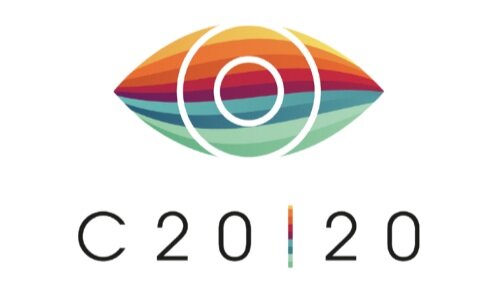
Preclinical Research Services
Our interdisciplinary team has a wide range of skills and expertise in in vivo preclinical investigations to de-risk products, utilizing various species (mouse, rat and rabbit) for proof-of-concept studies and non-GLP IND-enabling studies.
Ocular Disease Models, Proof of Concept, and Efficacy
C20/20 offers in vivo models across several species mimicking human disease states to validate a novel therapeutic approach. We help you select the appropriate in vivo model for your needs and through consultation are also able to generate new animal models or surgical approaches as needed, tailored to your specific needs. We have state-of-the-art equipment including optical coherence tomography (OCT), electroretinographs (ERG), a variety of fundus imaging modalities, and much more to generate both morphological and functional data to fully characterize model rescue.
Below are some specific applications of various models the C20/20 team can accommodate:
Angiogenesis & Permeability Models
Applications:
- Wet age-related macular degeneration (wet-AMD)
- Diabetic retinopathy (DR) and macular edema (DME)
- Retinopathy of prematurity (RoP)
- All ischemic retinopathies
- Retinal vessel integrity and perfusivity
- Corneal neovascularization
Examples:
- Laser induced choroidal neovascularization (CNV)
- VEGF induced retinal vasculature permeability
- Alkali-burn model of corneal neovascularization
Ocular Inflammation Models
Applications:
- Uveitis (anterior, posterior, both)
- Bacteria-induced inflammation
Examples:
- Endotoxin-induced uveitis (Lipopolysaccharide)
- Experimental autoimmune uveitis
- Live culture induced inflammation (ocular surface, intracameral, posterior)
Dry Eye Syndrome Models
Applications:
- Dry eye disease (DED)
- Keratoconjunctivitis sicca (KCS)
Examples:
- Scopolamine induced DED in controlled air flow and desiccating environment
- Benzalkonium chloride induced DED
Glaucoma Models
Applications:
- Primary open angle glaucoma (POAG)
- Secondary open angle glaucoma (SOAG)
- Close angle glaucoma
Examples:
- AP-2β knockout mouse model for closed angle glaucoma
- Microbead-induced glaucoma model
- Steroid-induced chronic ocular hypertension
- Water loading (hypertonic or isotonic) ocular hypertension
Corneal Wound Healing Models
Applications:
- Corneal wound healing
- Neurotrophic keratitis
- Corneal fibrosis/angiogenesis
Examples:
- Surface debridement induced by mechanical (incision) or chemical means
- Corneal fibrosis model
- Corneal neovascularization model
Ocular Allergy Model
Applications:
- Seasonal allergic conjunctivitis (SAC)
Examples:
- Ovalbumin allergic conjunctivitis
- Histamine-induced allergic conjunctivitis
- Pollen-induced allergic conjunctivitis
Custom Model Development
Our team of experts at C20/20 have a track record of developing bespoke ophthalmic animal models to suit the needs of industrial and internal partners. We will help you understand what metrics are most relevant to demonstrate efficacy of a novel therapeutic or medical approach in any part of the eye to generate a convincing dataset for future clinical work.
Ocular Pharmacokinetics
Assessing the distribution and pharmacokinetics of any active molecule is an essential part of any preclinical dataset. Our team uses state of the art liquid chromatography mass spectrometry (LCMS) and a comprehensive ocular dissection protocol to ensure each tissue is collected without cross contamination for industry-leading sensitivity and specificity.
Tissues collected include:
Conjuctiva
Cornea
Relevant glandular tissues
Aqueous humour
Iris/ciliary body
Lens
Vitreous humour
Neural retina
Choroid/RPE
Other tissues if necessary
Safety/Tolerability
When developing a new chemical entity, formulation or drug delivery system, understanding any potential adverse effects is critical to guide future experiments. We have developed internal methodologies for assessing the safety and tolerability (acute and chronic) of putative therapeutics and materials which can assess their effects with a high degree of granularity.
Our safety and tolerability studies are conducted in rodents, rabbits and other model animals upon request utilizing various routes of administration and include standard toxicology endpoints. All ophthalmic exams are conducted by PhD-trained research scientists with years of experience in this space, lending significant credibility to results obtained.
Endpoints include:
Cageside and detailed clinical observations
Body weight, food consumption
Slit lamp ophthalmoscopy with appropriate scoring schema
High-resolution imaging
Tonometry
Electroretinography (ERG)
Fluorescein angiography
Optical coherence tomography
Systemic pharmacokinetics (plasma, serum)
Ocular histopathology
Immunohistochemistry
Formulation and Delivery
We can provide integrated solutions to develop a wide range of conventional and advanced drug delivery systems for different applications. In ophthalmics, these include in situ gelling systems, contact lenses, microneedles, mucoadhesive eye drops, solid implants, surgical interventions and more.
We also have the necessary equipment and expertise for the fabrication and characterization of nano-formulations.
Techniques
Our expertise in animal modeling allows us to study a breadth of ocular disease states as well as test our novel ocular biomaterials in vivo. C20/20’s capabilities include:
Full histology capabilities including paraffin embedding and cryosectioning with a wide range of staining/immunohistochemistry
Custom genetic model development
Full ophthalmic microsurgery capabilities including subretinal injection, intravitreal and intracameral injection/implantation, dissection, and much more
Equipment
C20/20 has state-of-the-art imaging equipment. Below are some of our specialized ophthalmic imaging instruments:
Heidelberg Spectralis OCT + HRA with posterior, anterior, and wide angle imaging capabilities
Phoenix Micron IV fundus camera with full anterior and posterior lens set, OCT module, slit lamp module, and CNV laser module
Phoenix Micron X large animal fundus imaging camera
Phoenix Ganzfeld ERG
Zeiss slit lamp with video imaging capabilities
Tonolab tonometer
Dissecting microscope
For a full list of equipment, please visit the Equipment page.




